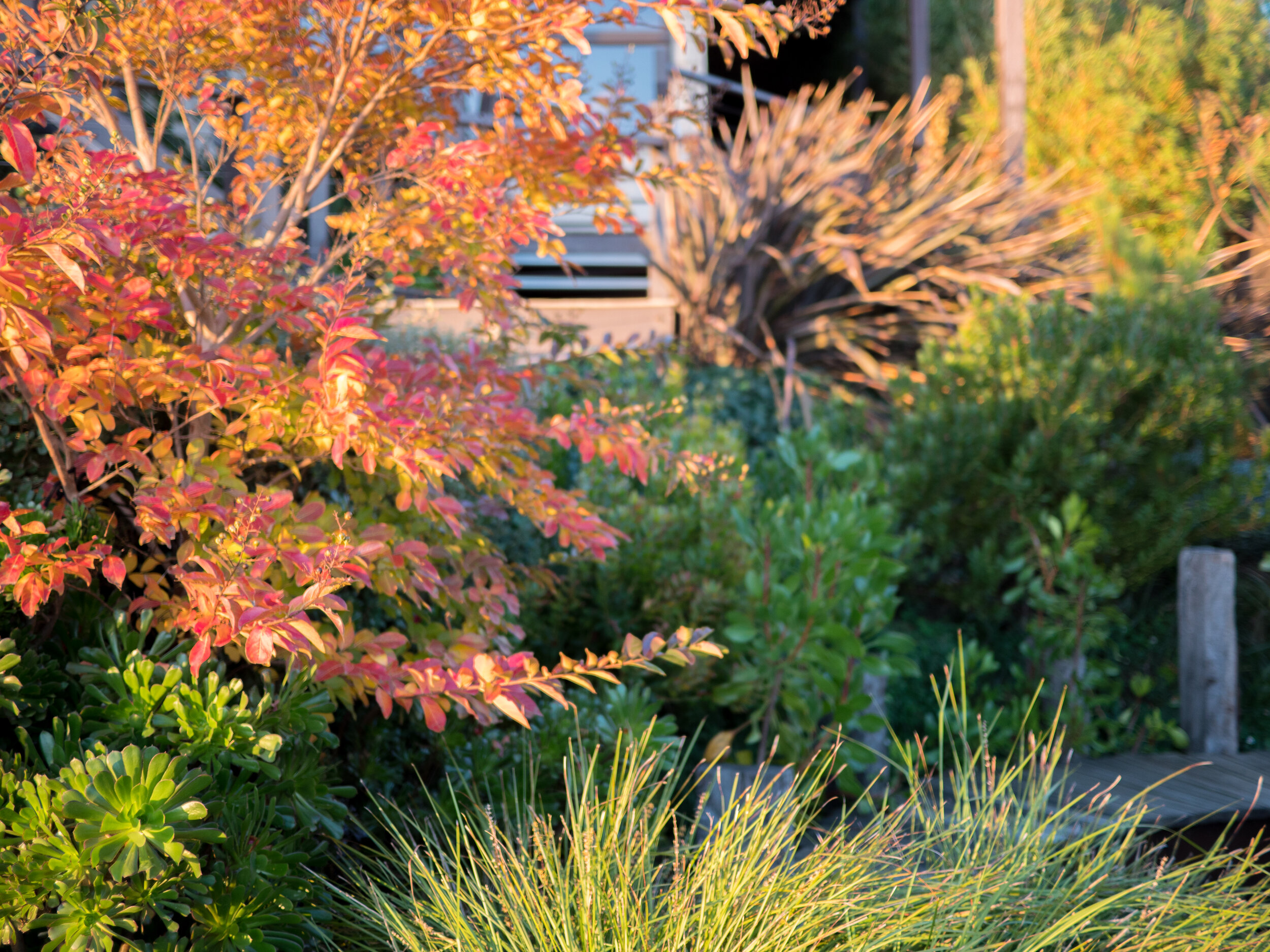Function
Plant functions in the garden
Examples
Aesthetics
One function of a plant is to look good. Plants can be visually appealing for a variety of different reasons through colour, texture, form etc.
Soil remediation
- Some plants can fix nitrogen back into the soil
- Leaf litter will compost down into soil
- Some plants can process metals and other contaminants in the soil
Weed Suppression
Form a dense cover over the soil inhibits seeds from germinating and seeds that do germinate often run out of energy in the seed before they can make it up to the sunlight to start photosynthesising.
Soil Erosion
Plantings can help to hold together soil and prevent erosion from wind and rain.
Wind
Microclimates
Plants can be used to create microclimates to amend the site for people and other plants.
Rockery
Some plants are suited to taking up spaces in between rocks where soil is limited.
Filtration
Plants can take nutrient and contaminants out of water systems.
Climbing
Hanging
Some plants can drape down and create a curtain of foliage and hide surfaces that are not that pleasing to the eye.
Covering
Plants can be grown over structures to create shade or dappled lighting.
Directing Traffic
Plants can create form to tell you where you are supposed to go.
Draping
Providing Food
Timber and Firewood
Change Over the Seasons
Changing Humidity
Creating Ecology and Habitat
Session Outline
Examples of plant functions
Presentations
Resources
Definitions
Microclimates - A microclimate is a localised condition E.g. the area underneath a large tree with a thick canopy or inside a fernery. They can differ slightly to the general climate of the area or significantly. They can also be small like part of a garden or large into the kilometres

















